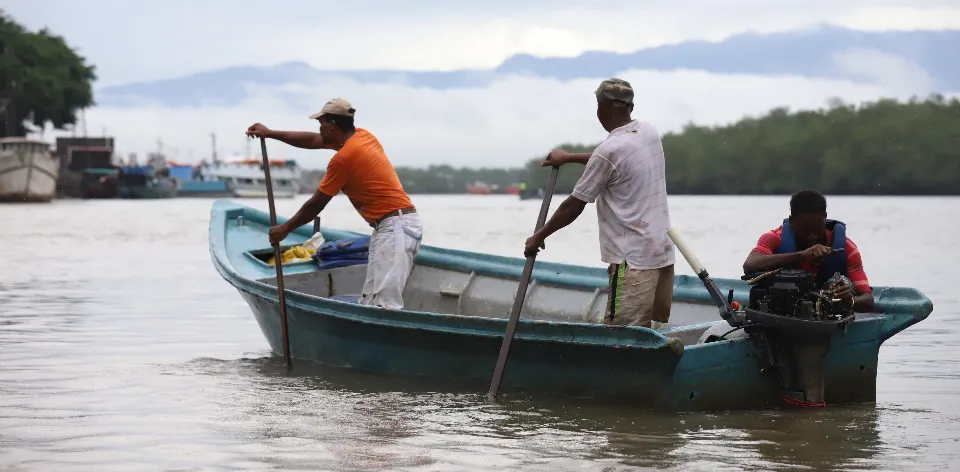 14/6/2024
14/6/2024
Continental Aquaculture: Leading Water Management in Colombia

The collaborative work with and from the regions on the Productive Planning Plan (POP) for the Aquaculture Chain for human consumption in Colombia is advancing: tilapia (red and Nile), cachama (white), trout, and farmed shrimp.
Learn more details about the collective construction process of the POP at the following link: https://upra.gov.co/es-co/Paginas/pop-acuicultura.aspx
Bogotá D. C., (@UPRAColombia, @Claudialili76, @Alexander_r_) To foster spaces for citizen participation around the construction of the Productive Planning Plan (POP) for the Aquaculture Chain for species intended for human consumption (tilapia, trout, cachama, and farmed shrimp), UPRA has socialized and progressed with aquaculturists, associations, national and regional entities, academia, and private companies, covering situational analysis, prospective analysis, and policy guidelines of this important chain for the agricultural sector in Colombia.
Led by the Ministry of Agriculture and UPRA, the Aquaculture POP in Colombia is regionalized as follows:
- Tilapia: 363 municipalities distributed in 17 regions
- Cachama: 38 municipalities distributed in 1 region
- Trout: 132 municipalities distributed in 3 regions
- Shrimp: 17 municipalities distributed in 2 regions
Carlos Alberto Robles, Executive Director of FedeAqua, explained: “It is a very positive balance for everyone in the sense that we are achieving integration between the public and private sectors around strategic planning for the development of this important sector, considering production in some regions and its relation to food security and productive development. Having a planning plan that allows us to organize, identify gaps, and facilitate the articulation between government institutions and the private sector is crucial.”
Dionisio Ortiz, Technical Secretary of the Aquaculture Chain at the Ministry of Agriculture, concluded: “The aquaculture sector is significant because it provides a very healthy protein source, contributes to the food security of Colombians, and has grown at an average annual rate of 6% over the last 10 years. Last year, an estimated production of 198,000 tons was recorded, a slight decrease of about 1% compared to 2022, considering the adverse situations we faced, such as sanitary emergencies and the effects of climate change, particularly the El Niño phenomenon. The sector is crucial in export matters. Twelve years ago, the Free Trade Agreement with the United States came into effect, starting with exports of approximately 1,000 tons. Today, around 17,000 tons are being exported. We now have a formalized productive chain that will soon have a collectively constructed Productive Planning Plan, providing a roadmap for organized, planned, and responsible aquaculture development."
Currently, per capita consumption in the same decade has increased from 3.5 to 9.5 kg per person per year, indicating that this sector, despite being small, has a significant growth dynamic, generates employment, contributes to food security, and supports more than 36,000 families of small and medium aquaculturists.
We invite you to participate in this aquaculture planning process on our website upra.gov.co so that the agricultural sector in Colombia continues to achieve success alongside the communities!

